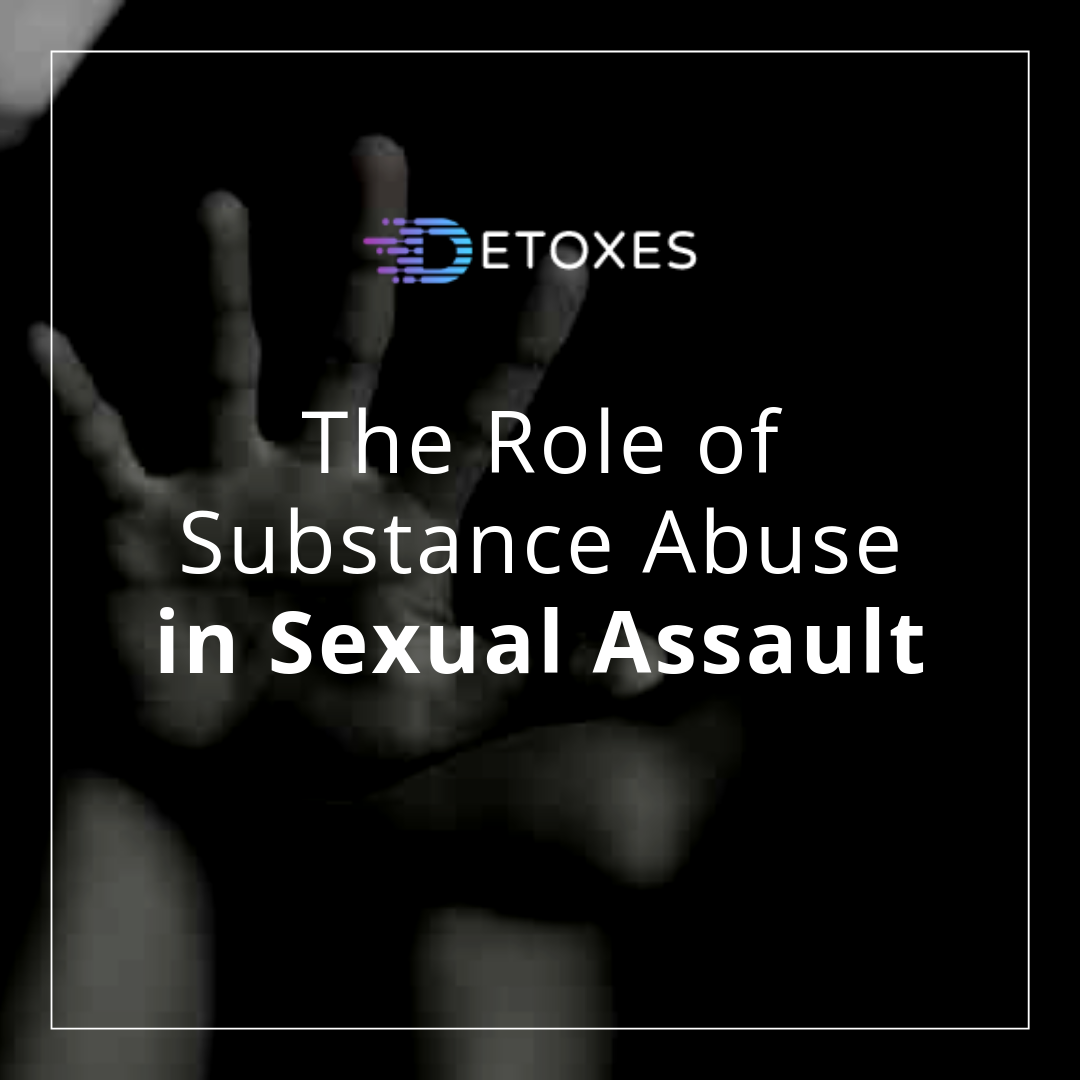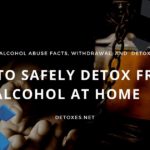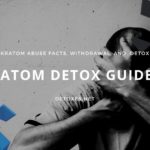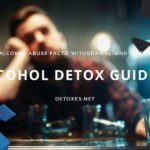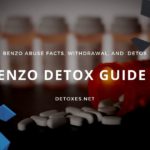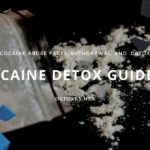Sexual Assault and The Role of Substance Abuse
Sex crimes come in many forms. In addition to rape and date rape, child molestation and coercive or violent sex within relationships plague society. Psychologists have long tried to understand the motivations behind these hateful acts, exploring such issues as a desire to dominate or express contempt for one gender; the corrosive effects of pornography; and societal message that sex is to be sought out by males and given or not given by females. This is a community guide for victims of sexual assault who wish to seek help.
Yet, the abuse of alcohol and illicit drugs play a major role in sex crimes. This article will explore:
1) The relationship between sex offenders and substance abuse.
2) The prevalence of alcohol or drugs at the time of assaults.
3) Substance abuse as a coping mechanism, primarily for victims of sexual abuse.
Sex Offenders and Substance Abuse
A 2017 article published in the Journal of Sexual Aggression reviewed literature on substance abuse and sex crimes. It referred to several comprehensive research works to shed light on the problem. One of these, from 1996, revealed that 60% of the studied sexual offenders had “ongoing problems related to substance abuse” when they committed their crime. 50% reported being drunk at the time of their assault1.
Similarly, a 2010 paper from Clinical Psychology Review bundled together more than a dozen previous studies that reported numbers on particular substance abuses by those who commit different sexual crimes.
Two major categories were alcohol misuse and substance abuse disorder. Misuse was measured most commonly with the Michigan Alcohol Screening Test (1971), with other instruments used for other substances.
Substance Use Disorder (SUD) is defined as the recurring use of drugs or alcohol leading to “significant impairment, including health problems, disability, and failure to meet major responsibilities at work, school, or home,” according to SAMHSA, the Substance Abuse and Mental Health Services Administration21.
A couple of the referenced studies referred to alcohol dependence. As defined by the DSM, dependence is more severe than misuse, and consists mostly of physiological symptoms such as the necessity of drinking more to be intoxicated and unsuccessful attempts to curtail drinking15.
The findings on these conditions are as follows10:
| Population | Condition | % Applicable |
|---|---|---|
| Rapists | ||
| Alcoholism | 35 | |
| Drug Misuse | 65.2 | |
| Child Molesters | ||
| SUD | 51.3 | |
| Alcohol Misuse | 27.3 | |
| Drug (non-cocaine) Misuse | 14.0 | |
| Incest Offenders | ||
| Victim <6 | Alcohol Dependence | 50.0 |
| Drug Misuse | 85.4 | |
| Victim >11 | Alcohol Dependence | 27.0 |
| Drug Misuse | 9.4 | |
| Sexual Murderers | ||
| Single Victim | SUD | 50.0 |
| Alcohol Use Disorder | 47.0 | |
| Multiple Victims | SUD | 47.4 |
| Alcohol Use Disorder | 44.6 |
Alcohol and Sex Offenders
One interesting fact in this review of various studies was that one of them collected data for non-sexual offenses. It found that non-sexual violent offenders had alcohol misuse 27.4% of the time; this is lower than the number for rapists (35.1) and sexual murderers (47.1).
This brings up the question of why the harmful effects of alcohol, specifically those that lead to crimes, manifest themselves in sexual violence more than in other types of crimes. One of the many factors is harmful fluctuations of mood. We know that drinking causes feelings of euphoria and other intensely-pleasant sensations and ways of thinking. The flip side is that later in the process when blood alcohol levels go back down, people experience irritability or frustration—what is often described as an “angry drunk.”
A study by Taylor and Leonard demonstrated a heightened emotional response among intoxicated people4. As to how this aggression leads to sexual violence per se, work by Aromaki and Lindman found that alcohol triggers “cognitive expectancies” linked to not only aggression, but also arousal4.
Perhaps a more enlightening set of research discussed ways of coping with stressful situations or setbacks. Among the varied ways of doing so is a category called emotionally-focused approaches, which is the most harmful. Rather than using logic or reason, support systems, etc., emotionally-focused approaches involve being depressed or agitated.
One study compared sexual offenders to a control group of non-offenders. It found that the sex offenders were much more likely to use emotionally-centered approaches, meaning that they had less control of their emotions4. This can cause bitterness and a well of unresolved anger that may come out in tragic ways. Further, people with this lack of control are particularly dangerous when intoxicated.
Another very dangerous way that alcohol can affect a person who goes on to commit a sex offense is that it causes a person to incorrectly gauge the desire or consent present in a partner. In fact, in one study, participants were shown a video of a rape scenario. One set of participants was inebriated, and they were slower than others to recognize threatening movements from the male rapist in the video. Further, they were more likely to view the woman as sexually aroused4. It is important to note that these subjects were not sex offenders, but a cross-section of males who were under the influence for the study.
In one study, it was found that 50% of sex offenders were intoxicated at the time of the assault. It should also be noted that the connection between alcohol and sex offense is stronger—as displayed in the table above—than the connection to other drugs. One reason for this may be alcohol’s powerful role in destroying inhibitions and impairing judgment.
Alcohol’s Role in Perpetrators of Date Rape
The article “Alcohol and Sexual Assault,” published in Alcohol Research & Health and funded by the National Institute on Alcohol Abuse and Alcoholism defines “date rape” as “rape committed by a person that the victim is dating2.” In common usage, this also includes acquaintances of all kinds, people who a woman may be in the company of at a gathering or party, etc.
What is important to remember is that it is rape, even if violence is not used. A sexual assault occurs when the victim does not or cannot consent (which would occur if she’s passed out, severely intoxicated, or under the age of 18)16. Therefore, date rape, while equally severe as any sexual assault, has some of its distinct dynamics from an assault that in many cases is committed by a stranger who may use force or violence.
The aforementioned article by Abbey et al. goes into some detail in explaining some of the attitudes at play in alcohol-related rape involving acquaintances. It refers, as with the earlier articles, to a multitude of studies. One study interviewed men who had committed sexual assault while drunk and found that they perceived alcohol to enhance sexuality more than college men who’d committed sexual assault while sober3.
A terrifying 1993 study involved researchers asking sober college men to read a story about a man coercing a woman to have sex with him. The men responded that they were more likely to do something similar when drunk than when sober14, which could be interpreted to mean that they have a way of conceptualizing themselves committing date rape if drunk. These studies indicate that not only are inhibitions worn down during intoxication but that college men may go into drinking situations with the expectation that drinking naturally leads to sex and that actions obviously inappropriate in general can be justified by alcohol.
Drugs and Date Rape
As we’ve seen, the workings of alcohol lead that harmful substance to contribute to sexual assault. It specifically takes away inhibitions and clouds judgment, as well as causing users to feel their chances of sexual conquest are raised. For those reasons, and observing the statistics, we see an emphasized relationship between alcohol and sexual assault.
Yet, drugs of various kinds are also used in acquaintance rape, by the perpetrators to incapacitate the victim. While these drugs may not be used as much as some people believe due to media reports, movies, and ideas that are popularly spread, they are an issue that we should all be aware of.
Here is information on various drugs known to be used in the commission of sex crimes:
Ketamine
This is a drug that is sometimes used in medical settings as a sedative or anesthetic. It is also used by veterinarians. It numbs and dissociates, which is why some people buy it on a black market and use it recreationally. The DEA (Drug Enforcement Administration) states that a powder form of ketamine is most often snorted or dissolved in drinks, and is often used in combination with other sources19.
To illustrate the danger of this substance, 85% of all emergency room admissions for drug overdoses included ketamine in the patient’s system19. Because it is odorless, it can be dissolved in a would-be victim’s drink. It causes near paralysis, intense drowsiness, and will also cause amnesia, making it difficult for a victim to remember the assault.
Rohypnol
This drug, with its infamous nickname “roofy,” is a benzodiazepine or a heavy sedative. It is often used by rehabilitation professionals to treat alcohol addiction and withdrawal. Because this drug is a power muscle-relaxant, it is sometimes used by sex offenders to make their victims feel incredibly relaxed, to the point of being unable to resist an assault15.
The most common use of the drug is dissolving it in a drink. It’s important to realize that the drug, in worst-case scenarios, can make victims unaware of what has happened to them.
GBL
GBL is the abbreviation for gamma-butyrolactone; it is a precursor of GBH or gamma-hydroxybutyric acid. GBL does have some legitimate use when people are intentionally taking it at safe doses. However, like other “date-rape drugs,” it does cause drowsiness, and is particularly dangerous when mixed with alcohol or other common party drugs23.
Intimate Rape and Sexual Assault
A form of sexual assault that is all-too-common and misunderstood is Intimate Rape (otherwise known as intimate partner sexual assault), defined as “an assault that is committed by a current or past spouse or boyfriend5.” The phrase “marriage rape” is used specifically for intimate partner sexual assault within a marriage. The website of The Advocates For Human Rights says, “[l]ike other forms of domestic violence, marital rape is about exerting power and control over one’s partner5.”
The National Coalition Against Domestic Violence provides us with the following alarming data:
- 14-25% of women are sexually assaulted by intimate partners
- 40-45% of women in physically abusive relationships are also sexually abused in the relationship
- More than half of women raped by an intimate partner are suffer multiple such assaults.
Researchers into the relationship between substance abuse and domestic sexual violence focus more on the victims—their substance abuse and how they turn to drugs and alcohol as a way of coping with the abuse. It can then be hard to find statistics on the substance abuse of the perpetrators of this assault.
What complicates matters is that available data often refers to domestic abuse in general, without singling out sexual violence. However, we do have insights into the big-picture issues that are made up of substance abuse and other maladies that devolve into sexual violence.
A report by the U.S. Department of Justice tells us that 61% of clients in domestic violence programs suffered substance abuse problems. Now, this is domestic violence as a whole, not just sexual violence, but it sheds some light on the situation. Alternatively, 26% of substance abuse program clients were domestic abuse offenders5.
Through some reasoning, going from what we know about violence, sexual violence, and substance abuse, we can develop some ideas about the connection. It can be observed that a lot of people with substance abuse issues—even in those in a romantic relationship—feel a lack of support and some alienation. They may be turning to substances to salve the wounds of domestic abuse they may have been victims of themselves. Further, instances of domestic sexual abuse can take place in desperate situations in which the perpetrator and/or victim can be involved in crimes, including drug dealing, and in more extreme circumstances, prostitution.
Alcohol, Drugs, and Victims of Sexual Assaults
In the first segment of this report, we discussed the impact of substance abuse on offenders of sexual violence. Now, we’ll explore the relationship between the use of substances and victims of sexual violence. We will spell out two major phenomena on this topic. The first is the co-existence of alcohol or drug use and improper sexual behavior. The second is victims of sexual assault turning to drugs or alcohol as a coping mechanism.
It is important to realize that as we discuss victims of sexual assault being under the influence of a controlled substance at the time, we in no way suggest that a victim of sexual assault should ever be blamed for the crimes committed against him or her. We are also never suggesting that alcohol usage is part of the cause of an assault.
Alcohol and Sexual Assault
Above, we discussed various “date rape drugs” used by criminals to incapacitate victims. Yet, as mentioned at that time, alcohol is most prevalent in sexual crimes. One study tells us that approximately half of all sexual assaults involve alcohol consumption, either on the part of the offender, the victim, or both.2 This percentage holds true to sexual assaults on college campuses6.
In college, while 69% of the assaults involve alcohol use of the perpetrator, 43% involves use by the victim6. In addition, a Washington Post poll in conjunction with the Kaiser Family Foundation said that intoxication was the single-biggest predictor of sexual assault on a college campus6.
According to the National Institute on Alcohol Abuse and Alcoholism, annually, 97,000 students aged 18-24 report alcohol-related sexual assault12. The same institute further reports that roughly half of the victims of sexual assault (including non-college students) were drinking at the time of the assault.
While discussing perpetrators of sexual assault, we looked at toxic psychological factors present in many of them. These factors revolved around the idea that these men believed, often unknowingly, that there was an inevitable connection between alcohol and sexual conquest. But while a large percentage of perpetrators of assault may have used substances at the time, it is also important to examine the use of alcohol among victims.
Drug and health policy analyst Helen Redmond asserts, “[m]any women who have been raped report that their attacker bought them numerous drinks and encouraged them to keep drinking for several hours before the attack18.” Further, a study shows that 75% of rapists admitted to getting women drunk to rape them1.
One issue that may contribute to some of the above-mentioned psychological problems is a dangerous overall poison in society that casts some blame on the victims of sexual assault if they’ve been drinking. Antonia Abbey, the author of the above study, explains that interviews with college students that presented rape scenarios revealed “the male attacker was held less responsible for the rape if he was intoxicated…In contrast, the female victim was held more responsible when she was intoxicated.” (emphasis added).
Sexual Assault Leading to Substance Abuse
The relationship between substance abuse and sexual assault is very common. Rather than serving simply as a cause, substances such as drugs and alcohol can form a web in which sexual assault is tangled, in fact, this can be expressed in reverse as well.
One insidious component of this tangled relationship is that victims of sexual assault often turn to substances to escape the trauma of sexual assault. The psychological term for this entanglement is comorbidity.
The severity of the impact of rape on a victim is clearly very devastating. Ninety-four percent of rape victims suffer post-traumatic stress disorder as a result17. Government statistics are all too clear as to how these victims try to cover up their mental distress.
A study that has provided important data for numerous study comes from the National Victim Center. Though the study dates back to 1992, thus pointing to a need in more recent comprehensive data on the subject, it provides important insights into the psychological effects of crime victims. These statistics reveal that rape victims are:
- three times more likely than non-victims to use prescription drugs non-medically
- four times more likely to use marijuana
- six times more likely to use cocaine
- one time more likely to use hard drugs other than cocaine13
Dean G. Kilpatrick, one of the directors of this study, found in a later study that victims were more likely to either begin or increase substance use after the crime committed against them, even if they weren’t previously substance abusers8. The horrific nature of the sexual assault causes chemical changes in the brain, which have symptoms such as insomnia, depression, and loss of self-esteem. The victim then turns to substances from an unconscious belief that they will restore positive emotions that can cope with stress—things stolen from them by the PTSD resulting from the assault.
Domestic or Intimate Partner Sexual Assault
Above, we dispelled a very harmful myth, that rape is perpetrated by total strangers. The majority of sexual assaults are not carried out by masked men in the shadows, using weapons or other force; rather, they are perpetrated in connection with social or dating situations. However, a lesser-discussed form of sexual assault is that which occurs in committed relationships, including marriages. It is harmful and dangerous to believe that all sex that happens with a married couple is, by definition, consensual.
Between 14 and 25% of women are sexually assaulted by an intimate partner at some point in their lives11. More than half of those were assaulted many times. Further, between 40 and 45% of women who suffer physical abuse in their relationship are also sexually assaulted.
Effects of Domestic Sexual Abuse
One should also note that domestic sexual violence can take the form of children being sexually assaulted by a parent. A report from the NIAAA says, “parental alcohol abuse may contribute to the abusive treatment of children. Furthermore, people who have been abused as children may be at increased risk for developing alcohol abuse as adults24.”
Just as victims of rape not perpetrated by intimate partners often experience PTSD, so do victims of intimate partner violence (IPV). In fact, these victims are likely to experience mental health issues, morbid obesity, and substance abuse20. Victims of IPV are 70% more likely than non-victims to drink alcohol heavily.
In a 2012 article, Marika Guggisberg states that victims of sexual violence turn to alcohol as self-medication. Guggisberg elaborates that “women use alcohol as a deliberate stress response to cope with alcohol and fear.” She also elucidates that victim of intimate partner sexual violence “reported to use alcohol as a form of gaining and/or maintaining control9. This leads her to recommend treatment for victims that focuses on empowerment.
Conclusions About Substance Abuse and Sexual Assault
When one looks into sexual assaults of any variety, one finds controlled substances, particularly alcohol, as a major culprit. While this report has established and reported a cause and effect relationship, it is the correlation that is more important to understand. Alcohol and drugs are comprehensive in their prevalence in sexual violence, playing many roles. Often, both perpetrators and victims of the assaults are users, and often are intoxicated at the time of the attack.
What is more poignant is that in response to the trauma of sexual violence, many women turn to substances to ease the pain. This leads to addiction, meaning another trying and damaging issue the victim is enmeshed in.
References
- Abbey, A (1991). Acquaintance rape and alcohol consumption on college campuses. Journal of American College Health. 1 Jan. 1991.
- Abbey, A, et al. (2001). Alcohol and sexual assault. Alcohol Research & Health. 25 (1). Retrieved February 13 2019.
- Abbey, A. et al (1996). Alcohol, misperception, and sexual assault: how and why are they Linked? Buss, D.M. ed. Sex, power, conflict: evolutionary and feminist perspectives. New York: Oxford University Press. pp. 138-161. Retrieved February 13 2019.
- Abracen, J, et al. (2017). Substance abuse among sexual offenders: review of research and clinical expectations. Journal of Sexual Aggression. 23 (3). Retrieved February 13 2019.
- Advocates for Human Rights, the. (2013) Marital and intimate partner sexual assault. Retrieved February 13 2019.
- Alcohol.org Editorial Staff. (2018). Sexual assaults on college campuses involving alcohol. 11 Jan. 2018. Retrieved February 13 2019.
- Collins, J. and Spencer, D. (1999). Linkage of domestic violence and substance abuse service, Research in brief, executive summary. National Institute of Justice. Retrieved February 13 2019.
- Dudrick, Roxanne. (2019). Sexual assault and substance abuse: when trauma contributes to addiction. Metrodrug.org. Retrieved February 13 2019.
- Guggisberg, M. (2012). Sexual violence victimisation and subsequent problematic alcohol use: examining the self-medication hypothesis. International Journal of Arts & Sciences. 5(6) 2012. Retrieved February 13 2019.
- Kraanen, F. and Emmelkamp, P. (2011). Substance misuse and substance use disorders in sex offenders: a review. Clinical Psychology Review 31. Retrieved February 13 2019.
- National Coalition Against Domestic Violence. (2018). Quick guide: domestic violence and sexual abuse . Retrieved February 13 2019.
- National Institute on Alcohol Abuse and Alcoholism. (2015). College Drinking. Retrieved February 13 2019.
- National Victim Center. (1992). Rape in America: a report to the nation. Retrieved February 13 2019.
- Norris, J and Kerr, KL. (1993). Alcohol and violent pornography: responses to permissive and nonpermissive Cues. Journal of Studies on Alcohol. 11 (118). Retrieved February 13 2019.
- Office of the Surgeon General. (2007). The Surgeon General’s call to action to prevent and reduceUnderage drinking. Retrieved February 13 2019.
- Office of Women’s Health. (2017). Sexual assault. U.S. Department of Health & Human Services. Retrieved February 13 2019.
- RAINN. Rain.org. (2018). Sexual violence affects millions of Americans. Retrieved February 13 2019.
- Redmond, H, (2013). Is Alcohol the New Short Skirt? Socialistworker.org. 11 Mar. 2013. Retrieved February 13 2019.
- Sassano, H.S., et. al. (2016). A Review of Ketamine Abuse and Diversion. Depression & Anxiety. (1091-4269), 33(8), 718-27. Retrieved February 13 2019.
- Soper, R. (2019). Intimate partner violence and co-occurring substance abuse/addiction. American Society of Addiction Medicine. Retrieved February 13 2019.
- Substance Abuse and Mental Health Services Administration (2019). Mental health and substance use disorders. U.S. Department of Health and Human Services. Retrieved February 13 2019.
- Victim Witness Assistance Program. (2017). Drug-Facilitated Sexual Assault. Drug Enforcement Association. Retrieved February 13 2019.
- WebMD. Gamma Butyrolactone. (2019). From https://www.webmd.com/vitamins/ai/ingredientmono-820/gamma-butyrolactone-gbl. Retrieved February 13 2019.
- Widom, C. and Hiller-Sturmhofel (2001). Alcohol abuse as a risk factor for a consequence of Child abuse. Alcohol Research & Health. 25 (1). Retrieved February 13 2019.


